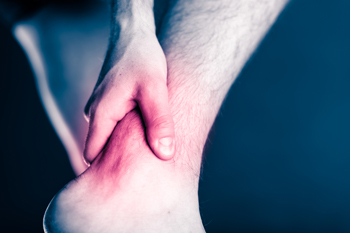
Achilles tendonitis is the inflammation of the Achilles tendon, the long tendon that connects the calf muscles to the back of the heel. The Achilles tendon is used every time you walk, run, jump, or push up onto your toes. Tendonitis is considered to be an overuse injury and is especially common among runners who increase their distance or speed too quickly. Achilles tendonitis can also affect middle-aged people who play sports, such as tennis and basketball, but only play on weekends. Pain of Achilles tendonitis usually starts out with an ache above the heel and progresses after longer bouts of running, stair climbing, or sprinting. Other symptoms are tenderness or stiffness in the morning that dissipates with some activity. If such activities continue and increased pain is ignored, Achilles tendonitis can lead to ruptures that may require surgery. If pain in the back of your heel persists or worsens, please consult a podiatrist for an examination and suggested treatment options.
Achilles tendon injuries need immediate attention to avoid future complications. If you have any concerns, contact Dr. Lubrina Bryant of District Podiatry, PLLC. Our doctor can provide the care you need to keep you pain-free and on your feet.
What Is the Achilles Tendon?
The Achilles tendon is a tendon that connects the lower leg muscles and calf to the heel of the foot. It is the strongest tendon in the human body and is essential for making movement possible. Because this tendon is such an integral part of the body, any injuries to it can create immense difficulties and should immediately be presented to a doctor.
What Are the Symptoms of an Achilles Tendon Injury?
There are various types of injuries that can affect the Achilles tendon. The two most common injuries are Achilles tendinitis and ruptures of the tendon.
Achilles Tendinitis Symptoms
Rupture Symptoms
Treatment and Prevention
Achilles tendon injuries are diagnosed by a thorough physical evaluation, which can include an MRI. Treatment involves rest, physical therapy, and in some cases, surgery. However, various preventative measures can be taken to avoid these injuries, such as:
If you have any questions please feel free to contact our office located in Washington, D.C . We offer the newest diagnostic tools and technology to treat your foot and ankle needs.